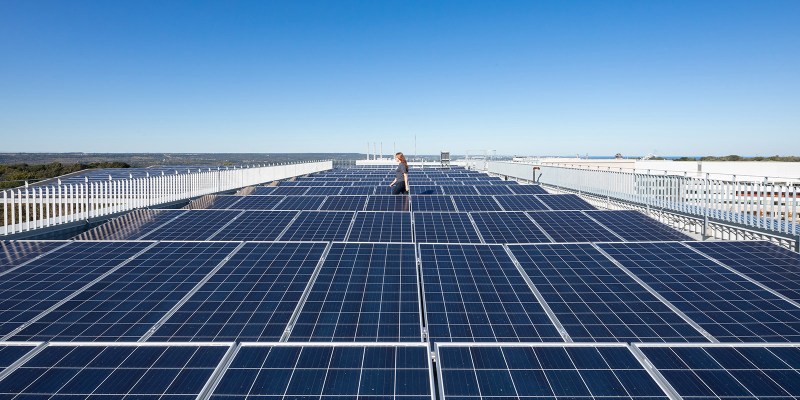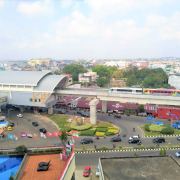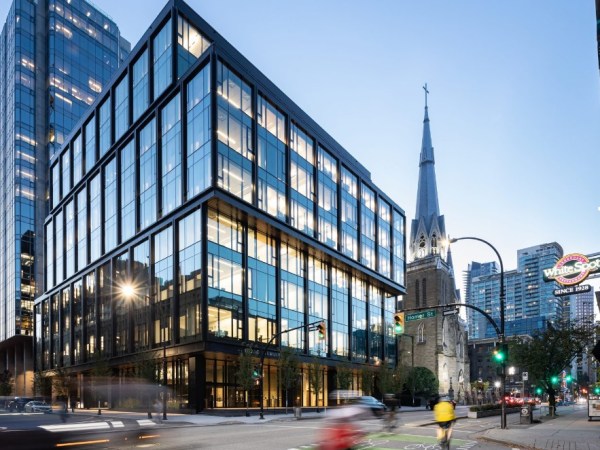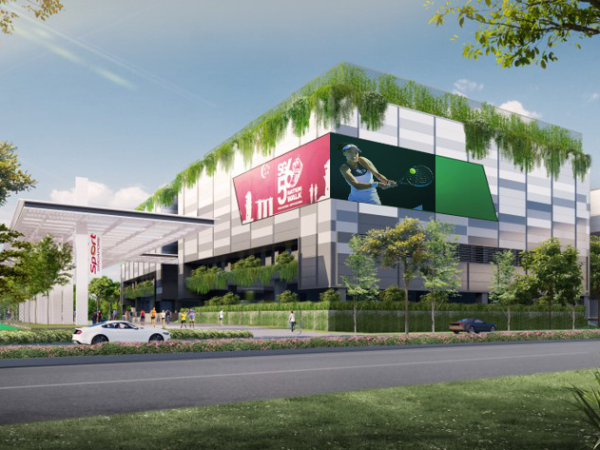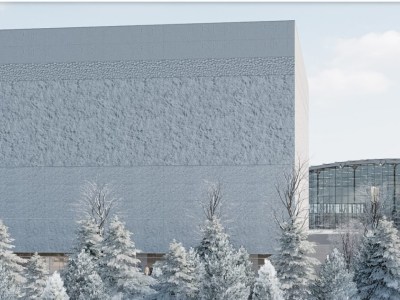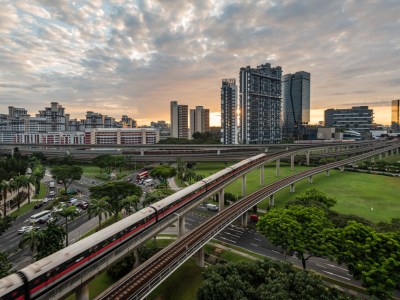Why female leadership matters in green architecture
Designing for a green future needs an abundance of creativity and skill sets. Having raised 5 children and crossed continents to work on infrastructural projects,and led the management of designs for some prominent low and zero-carbon buildings worldwide, Lisa Bate knows full well how the demands of being a mother impact an architect who builds the future. In this interview she explains why gender parity in architecture matters more than ever now.
Photo-voltaic panels are housed in a set of wings that soar above the Mohawk College’s Joyce Centre for Partnership and Innovation. The building’s energy is mainly sourced from sunlight, and the solar panels are accessible to students so that they can learn about sustainable building management first hand.
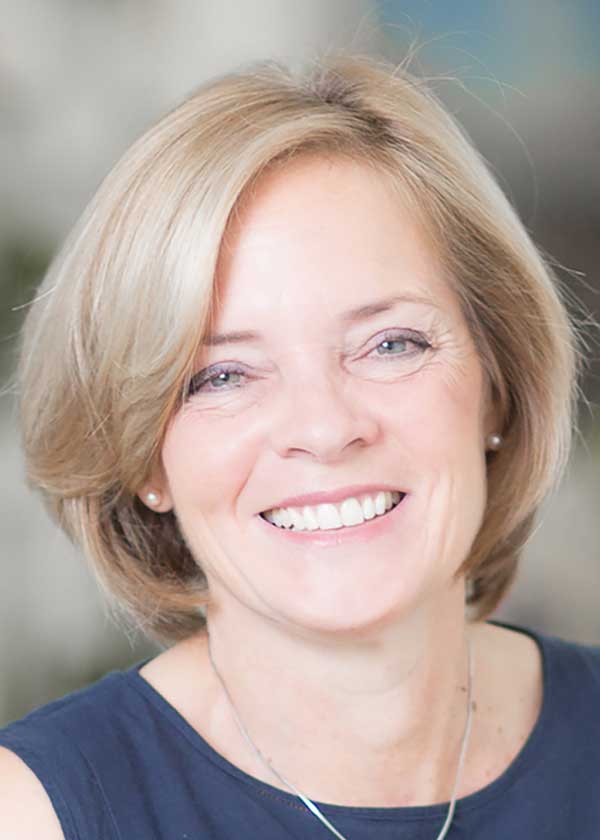
Lisa Bate
Regional Managing Principal
North America at B+H Architects (Member of the Surbana Jurong Group)
Chair, World Green Building Council
Email: [email protected]
Q: Lisa, your career path can be described as anything but linear. Tell us a little about what motivated you to pursue a career in architecture and a focus on sustainability?
A: If you asked me what I wanted to be when I grew up, ironically, it aligns to where I am today. I equally wanted to be either a psychiatrist or designer. A child of a musician/teacher and an obstetrician and gynecologist, I’ve worn many different hats over the years – including a couple of summers walking through the City of Markham in Southern Toronto, Canada, conducting health-checks on all the street trees!
My career path has taken many turns over the years; for example, I started my family later in life while having my own architectural practice, before subsequently being acquired by B+H. I then relocated my husband and two youngest children (still in high school then) to Shanghai in 2012 to become B+H’s Managing Principal, China and EVP, Asia – where I supported strategic growth in Asia before relocating back to Toronto in 2016. However, it was this path that shaped my passion for environmentally, economically, and socially sustainable design, in addition to becoming a voice of change for gender parity within the industry.
Q: You were building your career in a time when there was not much female representation in the industry. While that has changed, what challenges do you see women facing in the industry today?
A: Being a woman in architecture isn’t easy and while we’ve made great strides, there is still more to do. Many traditionally male-dominated industries in science, technology, engineering, and mathematics are implementing new policies and actively trying to attract women to those disciplines. Finding a sustainable work-life balance as a professional woman is a struggle that many face, regardless of industry. But the attitude towards women in architecture needs to shift to remove barriers to success, accommodate alternate work patterns, increase diversity in leadership and motivate the industry to design for a better future.
Results from the 2016 Women in Architecture Survey revealed that women felt they were underpaid in the field, with 40% of women worldwide believing they would be paid more if they were male. Other concerns were the lack of support within the industry for women to start families when on average, 92% of women worldwide said their workplace did not provide child-related benefits. We also see this in the lack of accommodation for childcare drop-off and pickup. Other data in the same year showed us that women felt highly under-represented.
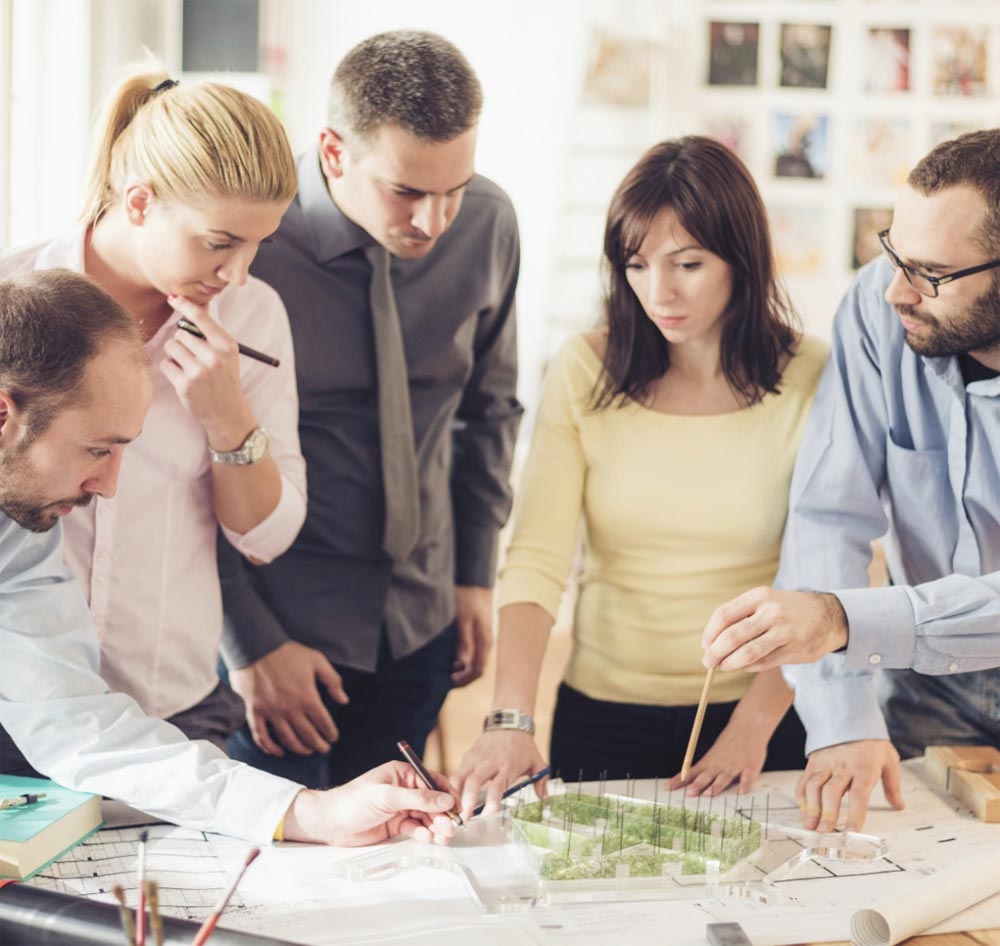
Six out of 10 female architects surveyed feel the building industry fully accepts the authority of the female architect.
As the 2017 results rolled out, it looked like women found themselves faced with yet another set of challenges. This time, we found female architects losing their faith in the practice citing sexism, discrimination, and bullying as likely contributing factors. In 2017, a whopping 60% of respondents didn’t think the building industry fully accepts the authority of the female architect. Women in architecture need to find an equal seat at the table with men, and we need to continue breaking down the barriers to their success. The 2018 results revealed that in most practices, at least 67% of the highest earners were men although women were more than twice more likely to work 10 hours/day at least once a week.
In 2019, the survey looks to include an additional variable of race and origin as part of the data, anticipated to demonstrate further factors challenging women in the profession.
Q: How did these challenges impact your career trajectory?
A: I had my first childbirth at the age of 35. My first daughter, Julia, arrived almost one month earlier than the expected delivery date, and I had pre-arrangements to meet with clients from Holland three weeks before I was due. Subsequently, I found myself attending my meeting one week after my daughter was born. There I was, with a pager on my hip and my mother on standby in a coffee shop at the base of the building armed with bottled breast milk, with no idea if Julia would take it or if I’d be paged to come quick. I also remembered taking many conference calls while nursing a baby in a closed room with my phone on mute.
Like many other women in the industry, I didn’t felt like I could put my career on hold to grow and take care of my family. It was business-as-usual because I was well-aware of the detrimental effects of having a baby, while at the same time, juggling my career.
Q: Why do you think female representation is important in architecture and green design?
A: In June 2018, moving my seat at the table from the side to the head as the first ever female Chair of the World Green Building Council (WorldGBC), I am aware that our industry is facing unprecedented challenges on the green front. We see climate change in action with the rise of wildfires, droughts, and flash floods, which account for huge human and financial costs. Solving these complex problems require technical, creative, and diverse leadership skills. And yet, our sector is missing out on an abundance of female talent and leadership.
Our world is in dire need of community builders. This is precisely why I advocate gender equality in architecture and a shift in gender perceptions within the industry. We need focused attention on our homes, workplaces, schools, public spaces, care centres, neighbourhoods and communities to embrace the diversity of cultures, beliefs, preferences, education, and economics of a highly interconnected world. Connection stimulates pride, well-being, purpose, tolerance, and prosperity. Focusing on monetary output do not necessary breed prosperity, but focusing on our core values, vision, passion, and open-mindedness do.
But it is not just about mitigating climate deterioration. Architecture is about building the future today through sustainable and resilient designs that achieve wider societal goals. Green buildings preserve our precious natural resources and improve quality of life, providing healthier and happier places for people to live, work, play, heal, and learn. Building green grows jobs, the economy and thriving communities, while lowering energy costs and increasing property values. This is good for consumers and businesses.
I’ve seen these benefits first-hand in buildings like Mohawk College’s Joyce Centre for Partnership and Innovation (Credit source: Canada Green Building Council/ The Joyce Centre for Partnership & Innovation at Mohawk) (refer to illustrations 1&2 below), a Net Zero Carbon (energy, waste and water) project which I co-steered at B+H Architects, alongside Joanne McCallum of McCallum Sather Architects – a long time friend, mentor and alumnae of the board of the Canada Green Building Council. Opening last fall, it is the second project – and first institutional building – to receive Canada’s Net Zero Carbon Design certification and is poised to achieve Net Zero Carbon certified operations, maybe even Net Positive Carbon Operations this month when it completes the required full one year occupancy period. WorldGBC’s Advancing Net Zero initiative aims to make this happen on a global scale – a future where every building produces zero carbon emissions by 2050.
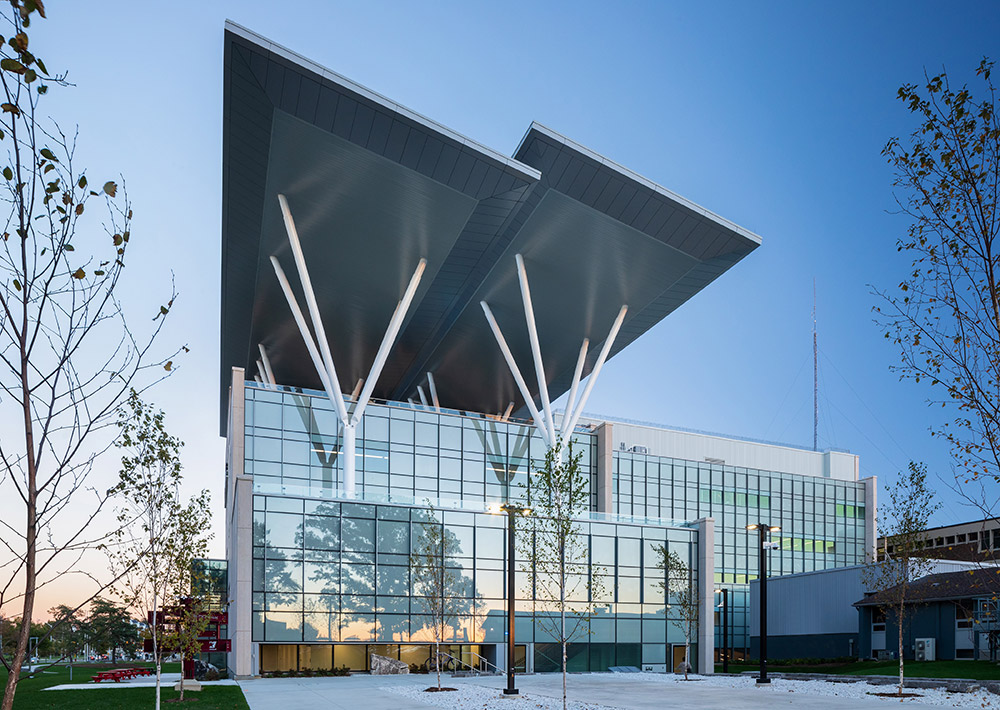
(Above and below): Perspectives of Mohawk College’s Joyce Centre for Partnership and Innovation, a Net-Zero Carbon Project which Lisa Bate co-steered with Joanne McCallum.
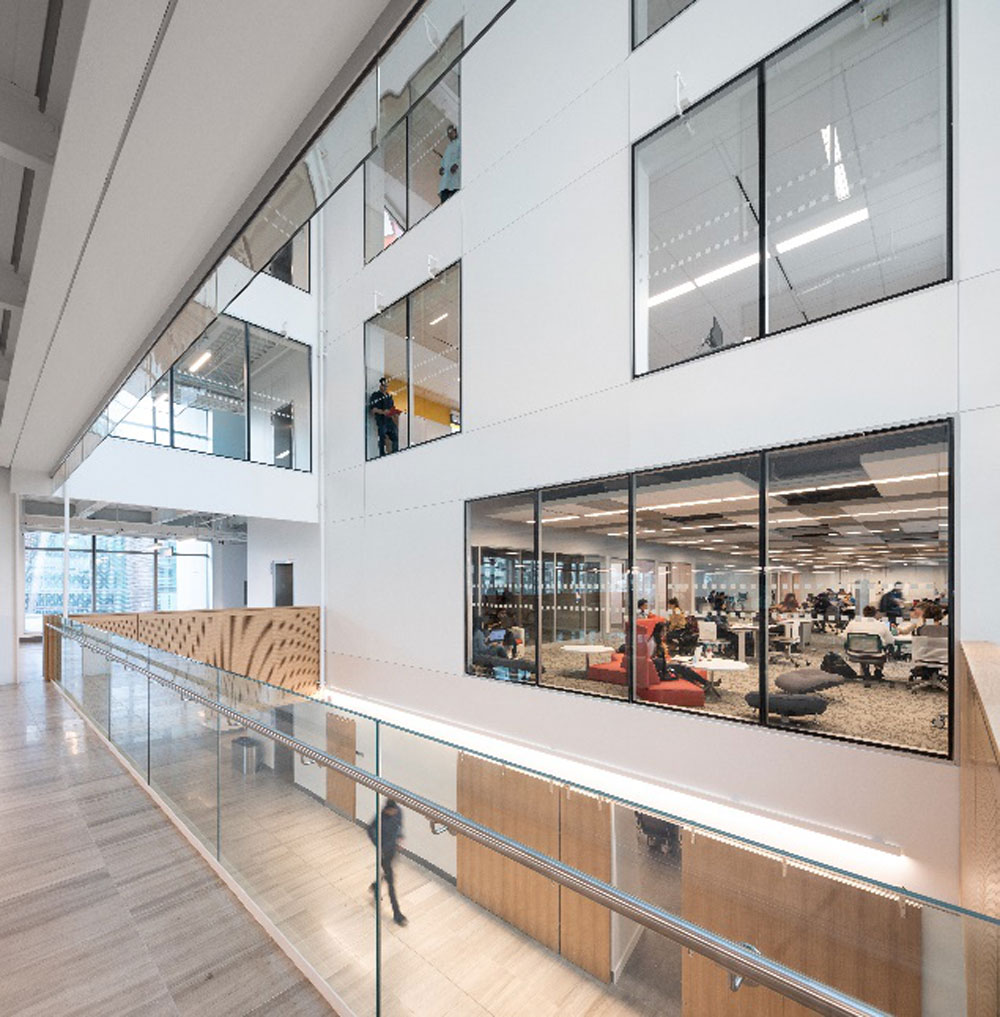
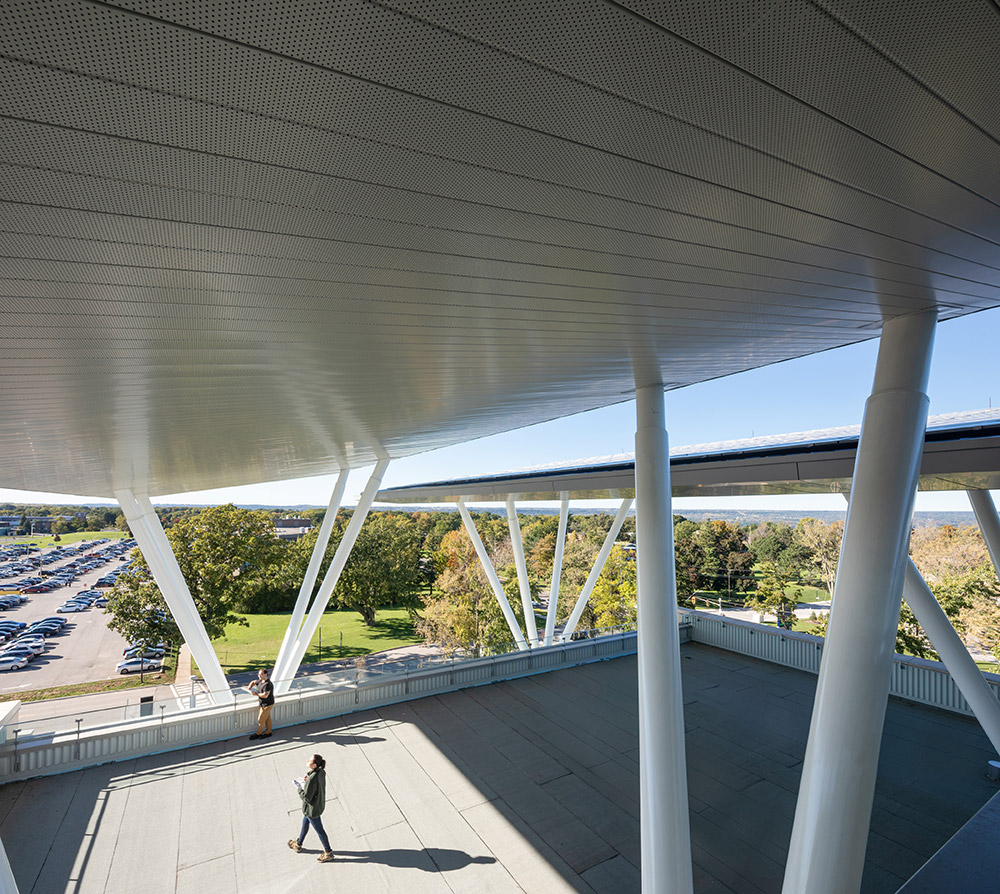
Q: What do you hope to accomplish as a green leader and what tips do you have for women in the industry?
A: We can get the ‘Whys’ but more importantly, we need to understand the ‘Hows’. I’m committed to fostering the next generation of women in the building and construction industry.
We have a role to play in showing what doing good looks like in our sector; showcasing individuals and companies making progress to inspire others and sharing a diverse evidence and knowledge base that result in stronger returns. Leaders can set an example, ensuring diversity and inclusiveness at the top. On a practical level, we will need to move quickly towards ensuring equal pay, meaningful part-time work and employment flexibility. We will need to commit to recruiting equitably, support and mentor aspiring women.
To aspiring women out there, I would say: Think boldly, push boundaries and make your voice heard. Do not be afraid to move outside of your comfort zone and to grab opportunities as I had to when progressing into a male-dominated management environment. Ask, or even demand, to be mentored and use your learning and emotional intelligence to plan your career and develop your skills. The challenges we face bring opportunities for society, for the environment, for our economy, and for women. The time is right to raise our ambition so that all talented women can find their seats at the table.
Editor’s note: This article was first published here on the Surbana Jurong website. The Mohawk College Joyce Centre for Partnership and Innovation project has won the 2019 Royal Architectural Institute of Canada (RAIC) Award of Excellence for Innovation in Architecture. This is a highly prestigious architectural award and the project team will be presented with the award at the 2019 Festival of Architecture Presidents’ Dinner and gala in October.


